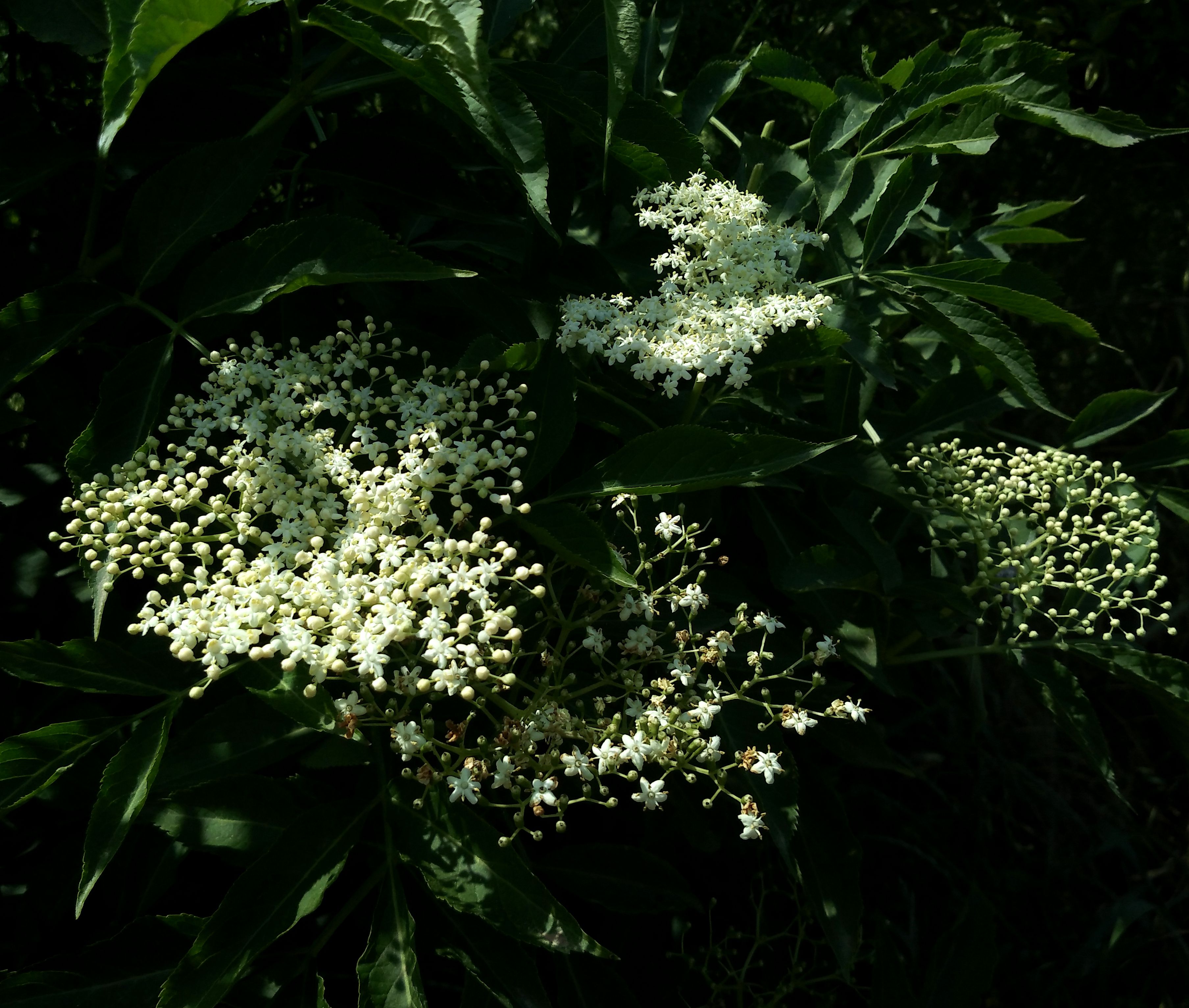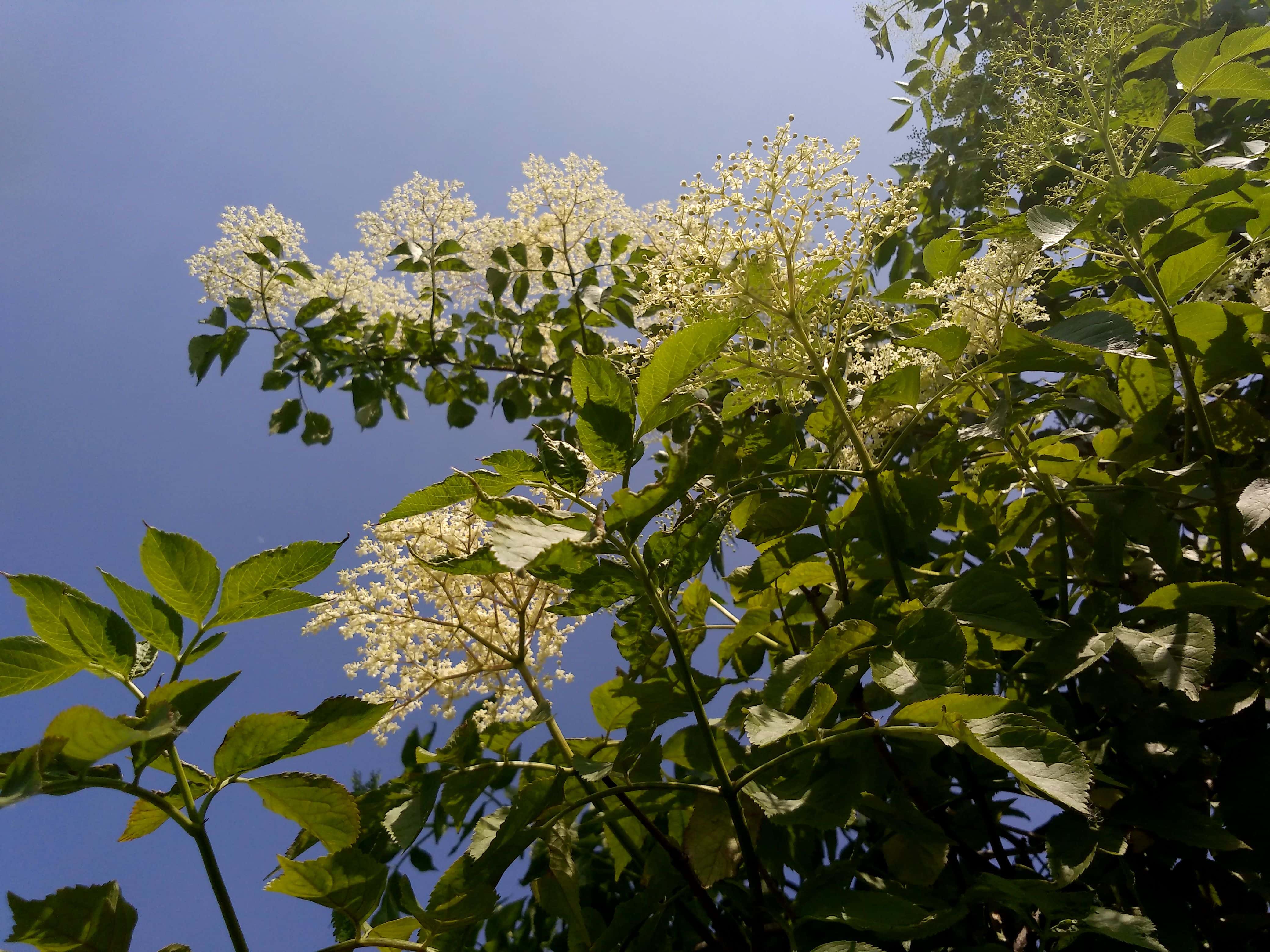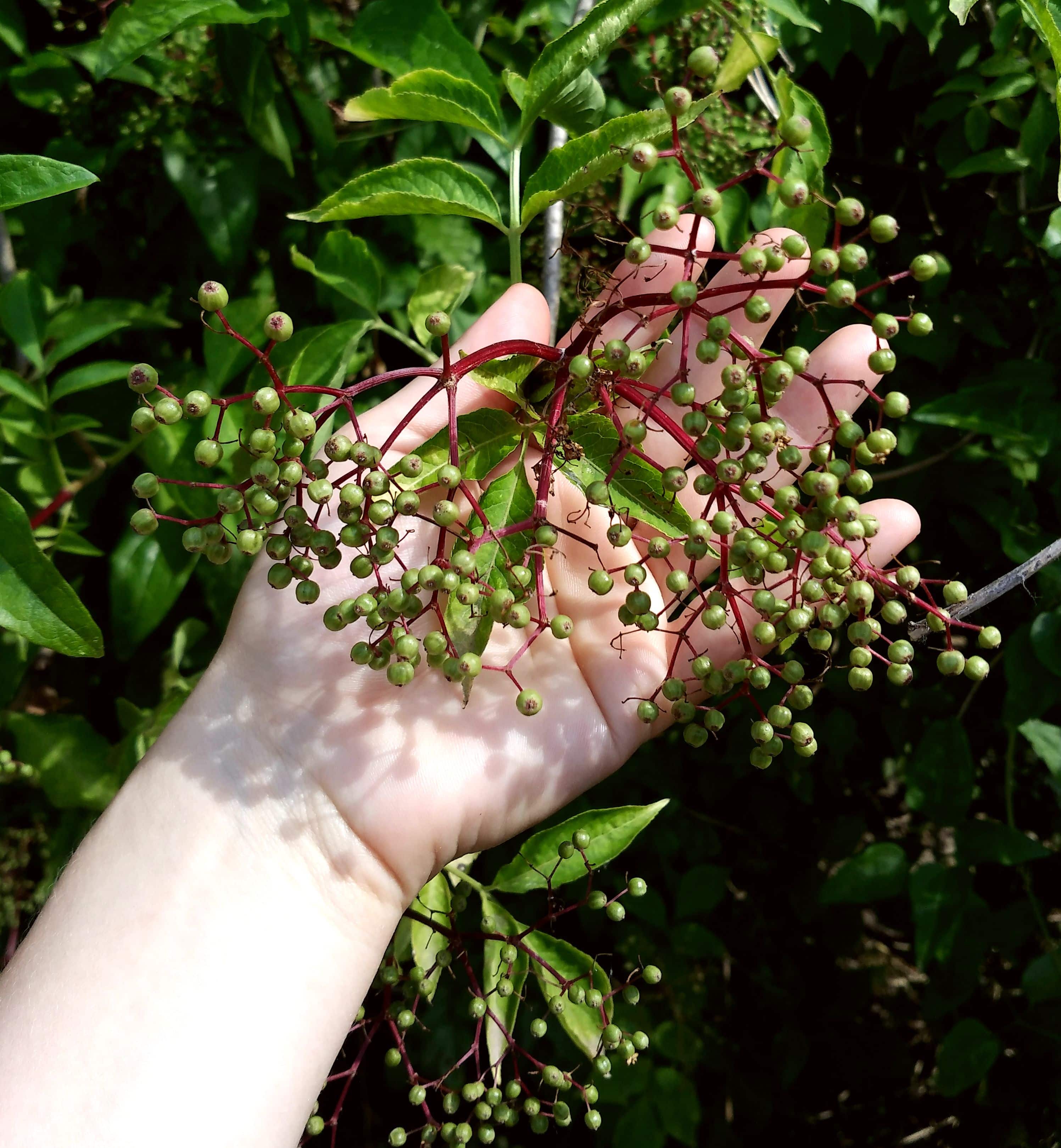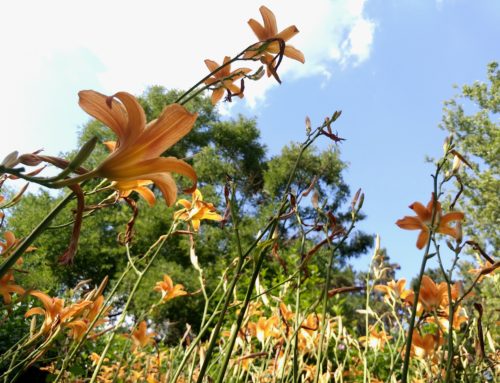Summer refreshment – shockingly juicy Elderberry
Traditionally, in Balkans, Sambucus nigra L. – Elderberry (elder, European black elderberry) is used for making infusions, jams, and tea. However, as Romanian name goes Socata and the commercial version is Fanta’s Shokata, let us introduce shockingly freshly scented plant – Elderberry.
Summer in a glass
One can make a flavoured infusion or a syrup for a soft and mild taste of summer in a glass. Elderberry, Black elder, European elder, European elderberry are synonyms for a member of formerly Family Caprifoliaceae, now Adoxaceae. It naturally grows in Europe, North America and some parts of South America and Australasia. Every continent’s gotta species representative of its own. But, the common feature is that people appreciate them for their flowers, fruits, and leaves.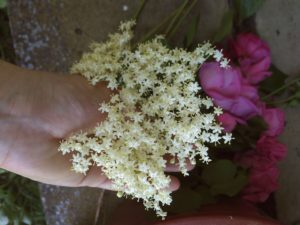
Elderberry Ecology and Botany
Elderberry grows as a bush or a small tree, usually up to 10 m tall. Shallow root system and cracked bark are typical and it loves moist soil. Sambucus nigra grows happily even on burned sites. So, we can call it a pioneer species, for it also can be found in any open space – around settlements, near roads and at the forest edges. Pinnate leaves are shiny and bear flower clusters on top of them. Flowers are tiny, creamy white to yellowish, and gathered into rich clusters. After June, juicy black-purple fruits start to ripe. The entire bush is a sight for sore eye and nose since it looks and smells charmingly rich – especially during the flowering period.
How do we use Elderberry?
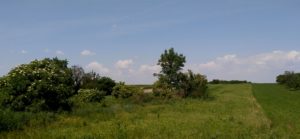 Folk medicine says that we can use ripe fruits (Sambuci fructus) as well. Pigments like anthocyanin do their thing in the sun, so the purplish colour kicks in through the stems, then the fruits. When they are black – they are ripe and ready to harvest. People use them for treating whooping cough, or to help to sweat during cold or flu, and to help to urinate and mucus ejecting. As a skin medicine compressed it is used for treating injuries and some skin diseases. You can use it for making juice as well.
Folk medicine says that we can use ripe fruits (Sambuci fructus) as well. Pigments like anthocyanin do their thing in the sun, so the purplish colour kicks in through the stems, then the fruits. When they are black – they are ripe and ready to harvest. People use them for treating whooping cough, or to help to sweat during cold or flu, and to help to urinate and mucus ejecting. As a skin medicine compressed it is used for treating injuries and some skin diseases. You can use it for making juice as well.
Pick your picking timing
Since Sambucus nigra flowers in June, prepare yourself for some countryside road trip. Avoiding roads is a good idea, better focus on forest edges, or deserted yards and start harvesting. If you want to make a syrup, cut the flowers (Sambuci flos) from the moment they start to open. Like all the other herbs (in this case that’s the use), their best quality will be “drawn out” by sun and warmth, so pick your picking timing.
Notice: the larger amount of fresh fruits can cause nausea, so always be careful and stick to instructions.
It’s syrup time, everybody!
A quick recipe for Elderberry syrup goes like this:
After you picked the flowers at noon, put 20 of those into 1 liter of cold water. Once in a while, you should stir and squish them a bit. Leave them be for 24 hours. After which you should filter them, add 1-kilo sugar and a couple of lemons for sourness. Stir. 24 hours later you pour the liquid into bottles. The entire time (48 hours of preparation time) everything can be placed in a cold place, like a fridge, for instance.
This syrup is a healthier option with no artificial preservation matters added.
Elderberry contains different active matters: flavonoids, mucus, tannins and essential oils. Some organic acids and, as mentioned – pigments. Like we said – Health is sexy!
This beautiful plant can be used for making herbal tea, dried flowers should simmer 30 minutes and drink it before the meal.
Bon appetite and enjoy your Elderberry!

